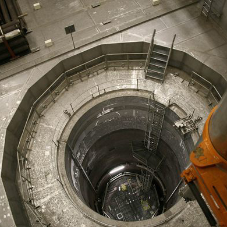Technological advancement has shaped our present-day society. How we behave, work and live is all related to the acceleration of technology and how far we have come in the digital world.
This has become ever more prominent due to the impact of the COVID-19 pandemic. With many individuals working from home and with a surge in online shopping sales, it is clear that we are even more reliant upon digital technologies than ever before. As a result, the built environment must be able to adapt to keep up with our new normal as we enter a new phase of digitalisation.
Supported by the CIOB, Brian Green comments in Issue 2 of Barbour ABI’s new Recreative Construction series:
“The pandemic forced us to rely more heavily on these digital technologies. It accelerated their adoption. It has hastened disruption within the economy. This presents complex but crucial questions over who should or will build what, where, when, why and how.”
Data published by the Office for National Statistics (ONS) states that in April 2020, nearly 50% of people in employment did some of their work from home, and 86% stated that this was because of the COVID-19 pandemic.
Alongside this, research undertaken at Cardiff University and the University of Southampton found that 88% of employees who worked at home would like to continue to do so, with 47% wanting to work from home often or all the time.
One of the reasons why homeworking has worked successfully for many individuals is due to businesses adapting to better use the technology available to them, creating a sense of connectivity when we can’t be physically together.
Individuals no longer need to arrange business meetings in person, or travel for long periods of time to get to their office building. This then raises questions of where and what type of buildings need to be constructed to accompany this shift away from large office spaces in city centres.
Similarly, with the increase in online shopping, we are seeing a gradual shift away from shopping on major high streets and so there has to be a consideration for what types of future retail spaces we are going to build and the location in which they are built. The ONS revealed that in March 2020, online sales as a proportion of all retailing reached a record high of 22.3% in March 2020 as consumers switched to online purchasing following the pandemic.
Brian Green says, “Greater working from home will reduce time spent commuting and free people to live further away from their workplace. Home delivery of shopping will not only alter the rules on where to locate shops, it will redefine what a shop is. These effects will directly impact on the location and design of homes, offices, shops, retail warehousing, and the infrastructure that connects them.”
It is clear that the construction industry has an opportunity to use the effects of digitalisation to help ‘Build Back Better’, and the technology that is now available to us offers a powerful tool in helping to create our digitalised future.
To subscribe to the Barbour ABI Recreative Construction Series supported by the CIOB, please click here.
Related Blog Articles



crop192.png)












